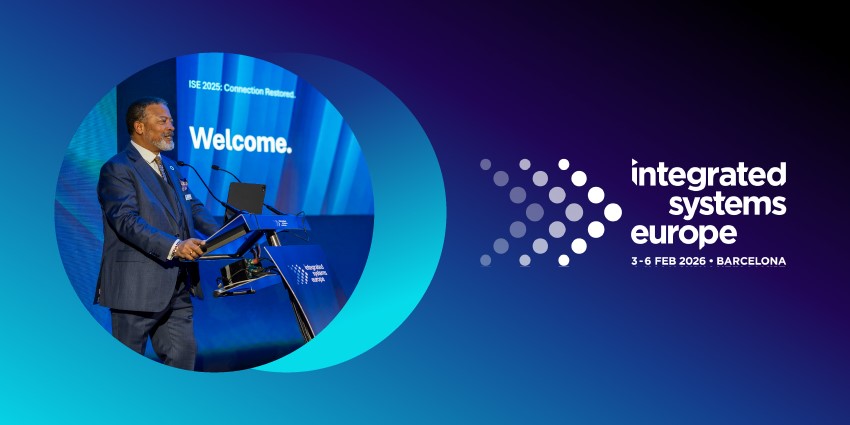The commercial real estate landscape is experiencing a seismic shift. The pandemic, the continuing persistence of hybrid work, and rising energy costs have meant that many building operators are facing downward revenue pressure and rising costs.
“Owner operators are navigating a complex environment marked by several pivotal challenges”
Ashley Evans SVP Global Business Development Strategic Alliances at New Era explained.
Indeed, a 2025 McKinsey report found that a total of $800 billion in real terms of value is at stake by 2030, and the total value of office space is expected to decline by 26% from 2019 to 2030.
This is not a death knell for commercial real-estate owner-operators, it is however a wake-up call, reminding us that the old model of purely providing a space to work in is no longer enough. Customers and tenants want more from their real estate leases and commitments. Hybrid work created a vacuum filled by the desire for integrated and flexible work experiences.
By partnering with managed service providers (MSP), commercial real estate owner-operators can harness new IT capabilities that reduce costs and provide new integrated collaborative experiences that give workers more reasons to return to the office.
The Complex Challenge Landscape
Traditional office spaces are struggling to justify their existence in an era where productivity no longer requires physical presence.
The statistics paint a stark picture:
“Less than 50% of knowledge workers actually work full-time an offices”
Evans said.
Equally, our time away from the office has allowed workers to really examine what they really want out of the office for the days they are in it.
“Only 14% of the global workforce are looking for a traditional corporate workplace experience,” Evans explained.
One of the major causes of dissatisfaction with working in an office is the aging infrastructure. Workers want the flexibility of a “WeWork” experience within their corporate facilities. They want to schedule a meeting space based on the purpose of the collaboration, not just to book a conference room. They want the technology to simply work, behind the scenes without any special knowledge of the platform. This includes getting from the curb through security and to the correct meeting space.
Building owners with legacy infrastructure are struggling to meet the diverse and complex needs of the modern work customers and they are competing with greenfield, smart buildings, LEED certified and built on a modern data architecture that leverages AI across the entire customer value chain.
“We believe there is a counter intuitive market dynamic occurring.
“Over 70% of owner-operators are actually not ready for the technology that they need or their customers want”
Evans said.
Many owner-operators engineer their space for the generic buyer experience, rather than specializing with best-in-breed space design and IT solutions. The lack of standards and integration of technology into the spaces makes it hard to deliver a flexible and positive experience for the tenants.
“The distribution and sprawl of legacy infrastructure technologies creates a complex web of systems that becomes really challenging to manage effectively, owner operators are playing the proverbial “whack a mole” support game, which simply isn’t scalable” Evans noted.
Market pressures and the financial burden of maintaining legacy capabilities forces owner operators to ask; when is the right time to modernize. The cost benefit analysis requires a multi-year strategy with potentially new business models – where IT is a function of the owner operator’s strategy – to differentiate and provide value added services to its tenants.
MSPs: The Fast Track to Modernization
Rather than dealing with fragmented, multi-vendor setups, working with an MSP can provide a catalogue of capabilities, solutions that integrate everything from the network infrastructure, to physical security, smart IoT devices, building management systems, collaboration technologies, HVAC, and energy and sustainability monitoring.
Plugged in together, these solutions can deliver outcomes that extend beyond their primary use cases. For example, in a meeting room fitted with Cisco collaboration devices, the occupancy sensors can feed data directly into the building management system to automatically adjust HVAC settings for optimal comfort and energy usage.
Partnering with an MSP like New Era provides a single source solution for owner operators that include; experience design, development of the catalogue of IT capabilities, through to the coordinated deployment of the solution and into the full managed services of the technology for the owner operator. Owner operators want a managed, standardized view of the delivery model but also a single pane of glass integrating often disparate technologies into one unified platform and a single source of truth.
New Era helps owner-operator partners deploy and manage comprehensive solutions to work seamlessly across different buildings and use cases.
“We allow owner-operators to white label the services their tenants need, including IT field services, video collaboration, data and AI and the deployment and management of those tools”
Evans noted.
The outcome provides commercial real estate operators the ability to help solve complex IT issues and augment the customer experience as per the tenants needs in a scheduled or on demand environment. For instance, if a large, inter-company meeting using Zoom is going to take place, the owner-operators’ IT team can work to deploy new installations across multiple floors, rooms and technologies.
This is crucial in today’s working climate as “customers are expecting a managed service associated with video collaboration services themselves. Customers simply want the technology to work, behind the scenes and if they have a challenge, they want to know someone is there to help, immediately,” Evans explained.
Pfizer’s R&D headquarters in New York is testament to that. Implementing over 20 different types of rooms to support various work styles and collaboration needs, New Era allowed the owner-operator to create an area that provided valuable space for its tenants.
“The number one room that’s being used in that space is called the lounge, and it’s a room basically with a couch, high-end tables, video collaboration on the walls, Microsoft Teams integrated and smart building technologies,” Evans explained.
The success of this model demonstrates that when technology is properly integrated and managed, tenants increasingly use it.
Revenue and Value Creation
Far from being a sunk cost to retain tenants, these efforts pay dividends. More than 91% of tenants will pay more for spaces with advanced technology features than buildings without.
Equally, the data generated by smart building systems creates new revenue opportunities that offset modernization costs: demand-side energy management.
“We look at helping owner operators participate in utility demand response programs, or selling excess energy back onto the grid, to generate income while supporting grid stability”
Evans explained.
These energy control capabilities are not only revenue generating, but essential for meeting increasingly stringent ESG requirements, something that when not in place is “reducing your property value.”
The same IoT sensors controlling energy based on occupancy generate valuable tenant insights. “You can provide tenants with anonymized insights on foot traffic, space utilization and environmental conditions that help tenants optimize their own operations,” Evans explained.
This aids companies using the space to gain strategic business insights from its use, like seeing RTO strategy success and staff collaboration patterns. Owner-operators can also use this information to examine this usage to identify upselling potential in tenant behavior.
“You can monetize value-added services like EV charging, flexible workspace bookings, advanced security features, even video collaboration services themselves,” Evans noted. “These programs can justify higher rents or service fees.”
Plus, this data, compiled with advanced analytics, can help owner-operators get a clearer understanding of future renewal prospects, with Evans stating that it can “forecast up to at least 75% of tenant behaviors related to lease renewals, allowing for different engagement models.”
Why the Future of Commercial Real Estate Is Smart
The transformation of commercial real estate represents more than just responding to current challenges; it’s a fundamental change of the business model from just a physical space to a service-based environment.
But rather than chasing one-off upgrades, customers need a holistic plan that integrates all their technology to seamlessly support how people actually work.
New Era’s platform provides the integrated space for owner-operators to effectively implement and manage the technology so that they can take advantage of the new value-added service.
For owner-operators, the question is no longer whether to modernize, but who to partner with to deliver that transformation that your tenants are seeking.







